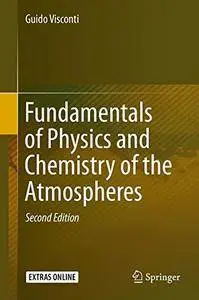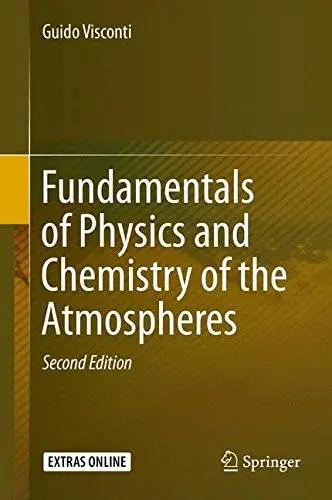Fundamentals of Physics and Chemistry of the Atmospheres, Second Edition
Springer | Atmospheric Sciences | July 3, 2016 | ISBN-10: 3319294474 | 805 pages | pdf | 11.55 mb
Springer | Atmospheric Sciences | July 3, 2016 | ISBN-10: 3319294474 | 805 pages | pdf | 11.55 mb
Authors: Visconti, Guido
Includes a new detailed discussion of the theories on the general circulation of the atmosphere in particular for the tropical regions and examples for the other planets
Presents an up to date and unique treatment of the metrics used to evaluate General Circulation Models (GCM) including and extensive discussion of the Bayes Methods
Includes a brief introduction to the sampling from the normal distribution in connection with the climate sensitivity question, with an example on the maximum entropy principle
This book is an introductory course to the physics and chemistry of the atmosphere and to climate dynamics. It covers the basics in thermodynamics, fluid dynamics, radiation, and chemistry and explains the most intriguing problems that currently exist in the study of the atmospheres of the Earth and planets. A particular effort is made to approach the different topics intuitively. Among the themes covered are the most recent evolution concerning the chemistry of polluted troposphere, the global warming problem, and chaos and nonlinear theory.
The book is almost completely rewritten in comparison to the previous edition, with a more logical organization of the chapters. The fundamentals of thermodynamics, radiation, fluid dynamics and chemistry are introduced in the first six chapters, including a new chapter on remote sensing. Also there is an additional chapter on geoengineering. A significant addition to the new edition, at the end of each chapter, are examples where the topics introduced in the chapter are further discussed with application to classical problems or new research items. Many of these examples are accompanied by computer programs. The most important updates deal with the theory of the general circulation, the methods to evaluate GCM, the detailed discussion of the urban troposphere and the chaos and nonlinear phenomena
Number of Illustrations and Tables
323 b/w illustrations, 15 illustrations in colour
Topics
Atmospheric Sciences
Remote Sensing/Photogrammetry
Climatology
Click Here to Buy the Hardcover from Springer
Click Here for More books



